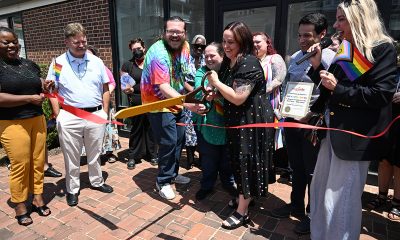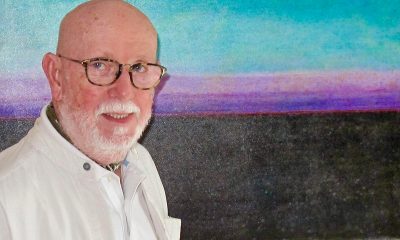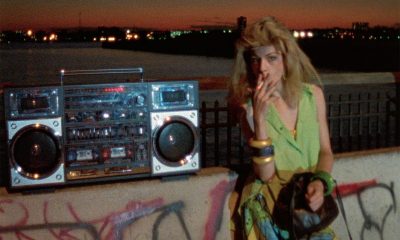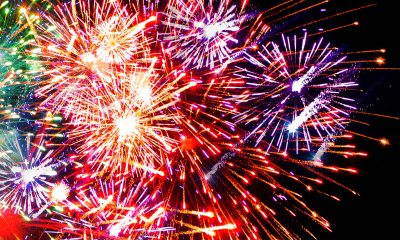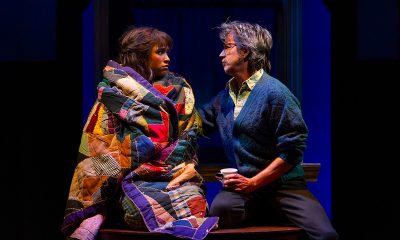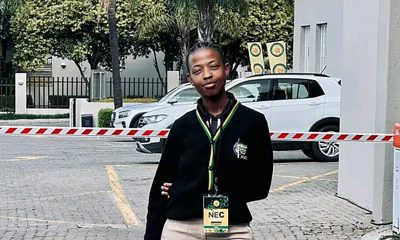a&e features
Pride, activist groups, the gay press and more take form in wake of Stonewall riots
Bumps and hurdles loomed in most areas as movement came of age in ‘70s and beyond
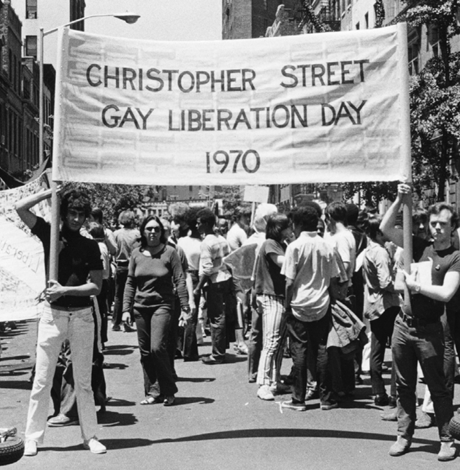
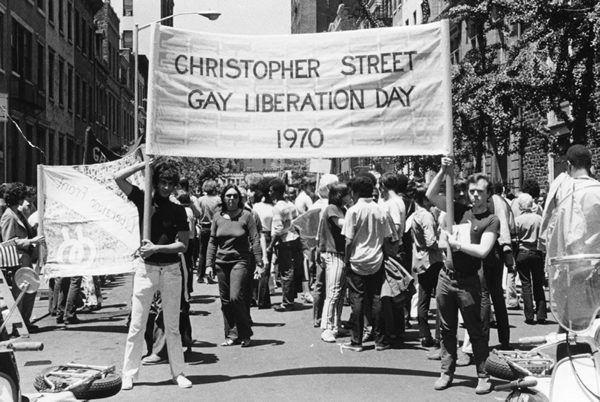
The most impactful legacy of Stonewall isn’t what happened those few nights, but what grew out of it — annual Pride celebrations, of course, but also the gay press, a proliferation of rights groups, de-classification of homosexuality as mental illness, disco, sexual lib, AIDS and more. Whole books have been written on each of these topics, for anyone interested in further study.
THE BIRTH OF PRIDE
Some of the people who rioted starting on June 28, 1969, once things settled, started to organize and a group called the Stonewall Veterans Association, which is still in existence, formed.
In November 1969, Craig Rodwell (1940-1993), owner of the Oscar Wilde Memorial Bookshop (the country’s first gay bookstore), along with his partner Fred Sargeant, Ellen Broidy and Linda Rhodes, proposed a New York City march to commemorate the riots. He introduced a resolution at the Eastern Regional Conference of Homophile Organization (ERCHO) in Philadelphia.
“We propose that a demonstration be held annually on the last Saturday in June in New York City to commemorate the 1969 spontaneous demonstrations on Christopher Street and this demonstration be called Christopher Street Liberation Day,” the resolution said. “No dress or age regulations shall be made for this demonstration.”
The concept of Pride being held in other cities simultaneously was ingrained in the concept from the outset.
“We also propose that we contact homophile organizations throughout the country and suggest that they hold parallel demonstrations on that day. We propose a nationwide show of support,” the resolution stated.
Christopher Street Liberation Day was held June 28, 1970, the first gay Pride march in the U.S. It covered 51 blocks to Central Park with a parade permit reluctantly delivered just two hours before the scheduled start time. Marches were simultaneously held in Los Angeles and Chicago. In 1971, it had spread to Boston, Dallas, Milwaukee and three European cities as well. Pride in Washington started in 1975.
Since 1984, the parade and related events in New York have been produced and organized by Heritage of Pride, a volunteer, non-partisan LGBT group.
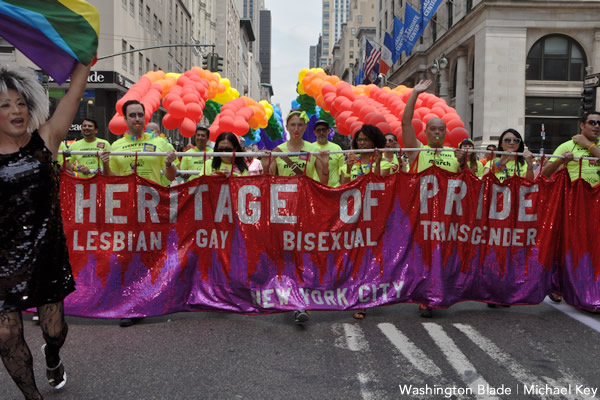
THE GAY PRESS
The gay press didn’t begin with Stonewall. The earliest known publication had an inauspicious start. In 1947, an underworked secretary trying to look busy, typed, stapled and distributed 12 copies of Vice Versa, which she dubbed “America’s gayest magazine.” Since then, thousands have followed in her steps producing about 2,600 — at their height — publications ranging from weekly newspapers to more radical tabloids to glossy monthly magazines.
Seminal pre-Stonewall publications included Ladder, Vector and the Los Angeles Advocate.
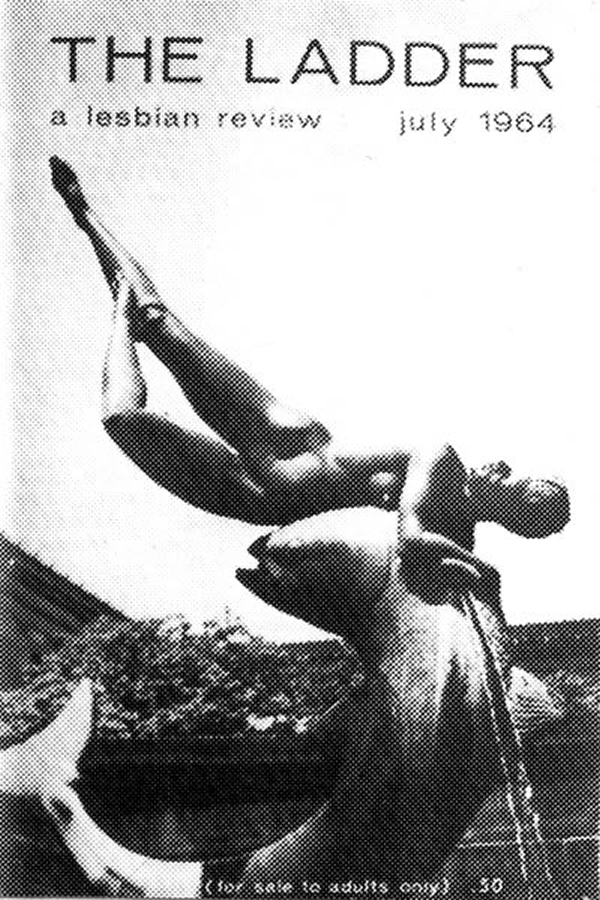
The number of these publications exploded after Stonewall. It was seen as necessary as even the most liberal alternative press of the day — in New York, The Village Voice, refused to print the word gay. “Throughout the ‘70s, people who depended solely on mainstream media for news would hardly have been aware of the gay rights movement,” writes author/historian Eric Marcus in his 2002 book “Making Gay History.” “With a few notable exceptions, the television networks, daily newspapers and newsmagazines gave little coverage to gay issues.”
“After the apocalyptic Stonewall impulse, the press erupted in so many directions that it is impossible to document when each publication was founded, how long it existed or who edited it,” writes Rodger Streitmatter, author of “Unspeakable: the Rise of the Gay and Lesbian Press in America.”
“Our Own Voices: A Directory of Lesbian and Gay Periodicals” listed 150 publications by 1972, Streitmatter writes.
One of the most influential was called simply GAY, started in December 1969 by gay press veterans (and partners) Jack Nichols and Lige Clarke, who’d covered Stonewall. It soon became, according to Streitmatter, the “newspaper of record for gay America.”
Veteran activist Lilli Vincenz, who wrote a lesbian column for GAY, is quoted in “Unspeakable” as having said, “It was the newspaper of the day. If you were gay and you wanted to find out what was going on in the world, you turned to GAY.”
It sold 20,000 copies of its first issue (at 40 cents per copy) and reached a monthly circulation of 25,000 by its second issue, figures that took the Advocate two years to build. Within six weeks, two other New York-based newspapers were launched — Come Out! and Gay Power. GAY continued until Clarke was murdered in 1975.
Streitmatter writes later in the book that the publications “that survived the aftershocks of Stonewall were those with a combination of calm voices and stable finances,” citing GAY in New York and The Advocate in Los Angeles as leaders.
But two months before GAY was launched, in October 1969, Vincenz and a small group of men and women met in the basement of a Connecticut Avenue building to work on the first issue of the Gay Blade. The monthly, mimeographed one-sheet issued by a volunteer staff contained three columns of news, community notices and a small advertisement for someone who wanted to sell a car, writes author Edward Alwood in his 1996 book “Straight News: Gays, Lesbians and the News Media.”
“By distributing copies at the city’s gay and lesbian bars, they quickly established the Blade as a source of valuable information that was not available from any other source,” Alwood writes.
Editor Nancy Tucker told Alwood they printed “things that we thought were important to the mental health and social welfare of other people like us,” Alwood quotes her as having said. “Periodically we ran warnings of blackmailers who hung around Dupont Circle or the gay bars. We wrote about rough cops. There were plenty of military and government workers who were undergoing some type of security investigation and all of those people needed to know about their rights. These were a heavy orientation for us.”
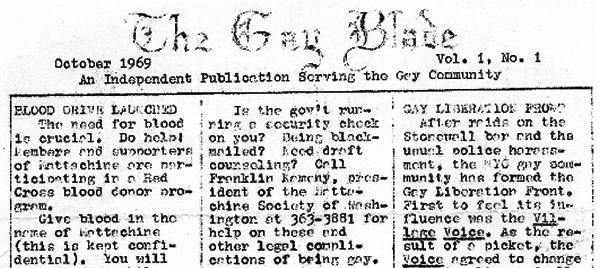
It was the first of a new generation of gay papers that included Gay Community News in Boston, NewsWest in Los Angeles, Gay News in Pittsburgh and GayLife in Chicago, Alwood writes.
“Unlike the early homophile press, which stressed identity and cooperation, this second generation concentrated almost solely on political change and resistance,” Alwood writes.
The Gay Blade was rechristened the Washington Blade in 1980 and went to weekly publication in 1983. It’s the oldest continually operating LGBT newspaper in the country. It celebrates its 50th anniversary in October.
REGIONAL GAY RIGHTS GROUPS
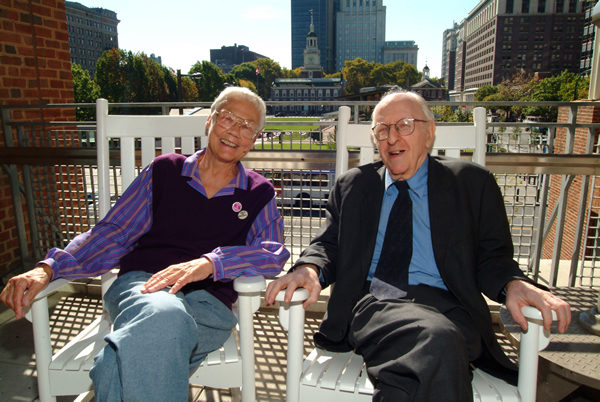
Although groups like the Mattachine Society and Daughters of Bilitis had been around since the ‘50s, things became more emboldened after Stonewall. The Gay Liberation Front was the first organization to use gay in its name. Previously, all “homophile” (as they were known) groups purposefully did not.
Legendary early activists Barbara Gittings and Kay Lahusen were vacationing on Fire Island when they heard about Stonewall. Upon returning to the city in September, they began attending meetings of the Gay Liberation Front and encountered a much different group of people and ethos.
“They were huge meetings, it was the best theater in town,” Lahusen is quoted as having said in “Making Gay History.” “This was the heyday of radical chic … and here I was this plain Jane dinosaur from the old gay movement.”
Gittings said there was zero acknowledgement of the pre-Stonewall efforts.
“Suddenly here were all these people with absolutely no track record in the movement who were telling us, in effect, not only what we should do but what we should think,” she’s quoted as having said in “Making Gay History.” “The arrogance of it was really what upset me.”
Gittings said she and Frank Kameny were even asked at one Philadelphia meeting who they were and what they were doing there.
“For once, I think even Frank was dumbfounded,” Gittings is quoted as having said. “As if we owed them an explanation.”
Gittings said right after Stonewall, the Gay Liberation Front and the Mattachine Society, which some perceived as having been slow to respond to the riots, were the only two active groups.
“Mattacine was so stuffy and its day was over,” Lahusen said in “Making Gay History.” “These organizations seem to have a built-in life expectancy.”
“Mattachine wasn’t up to managing the lively response to the Stonewall riots and GLF came in to fill the void,” Gittings told author Marcus.
The Gay Liberation Front (a name used by multiple groups over the years), however, disbanded after just four months when members were unable to agree on operating procedure. In December 1969, some people who had attended Front meetings but left frustrated formed Gay Activists Alliance (GAA), an “orderly” group to be focused entirely on gay issues. A D.C. chapter had formed by 1971. It became the Gay & Lesbian Activist Alliance in the ‘80s, and continues to this day.
Many of the main groups with major name recognition today started later. The National Gay Task Force (now the National LGBTQ Task Force) started in 1973. Two groups merged to form the largest, Human Rights Campaign, in the early ‘80s.
Many of the state groups came much later, uniting around the marriage issue. The California Alliance for Pride and Equality was founded in 1999 and only became Equality California in 2003. The now-dissolved Empire State Pride Agenda was founded in 1990 through a merger of two earlier groups. By 2005, it was the largest state lobbying group.
AIDS
In a roundabout way, Stonewall, in time, also brought attention to the disparate health care needs of LGBT people. That’s the contention of Perry N. Halkitis, dean of Rutgers School of Public Health and author of the new book “Out in Time: From Stonewall to Queer; How Gay Men Came of Age Across the Generations.”
“The riots allowed gay people to say ‘we exist’ and create a demand for health equity,” Halkitis said in a recent interview with tapinto.net. “The civil disobedience of Stonewall served as a catalyst to the activism of the AIDS era, which in turn has contributed to the foundations of how public health today emphasizes social justice and health equity.”
Although initially about wholly separate issues, Stonewall started a movement that was eventually “catapulted” 13 years later when HIV hit, he says.
“As the riots framed the basis for the recognition of gay people as viable members of the population, the AIDS crisis of the 1980s and ’90s created the circumstances by which they would come to demand that the government and society attend to their well-being,” Halkitis said in the tapinto.net interview. “Before then, gay people kept silent and were invisible to their doctors, who were unaware they were gay or did not understand the mental health and drug issues they were facing. The AIDS crisis shined a light on the fact that there was this population that needed specific health services beyond what was given to the general population.”
Dr. Demetre Daskalakis, deputy commissioner for the Division of Disease Control of the New York City Department of Health and Mental Hygiene, said in a New York Times interview last week that the histories of Stonewall and AIDS are inextricably linked and have affected what’s still happening today.
“It’s so critical that you had an uprising, and it became not just folks being downtrodden by their system but actually then fighting back,” Daskalakis told the Times. “I feel that the fighting spirit now is like the ACT UP experience in New York. There was a feeling that it was part of LGBTQ rights to ask for faster, better support and funding to fight HIV. … I think the legacy of activism remains powerful decades later.”
As the number of deaths soared, gay and lesbian people and gay rights organizations redirected their energies, Marcus writes in “Making Gay History.”
“Many thousands of gay people who had never participated in gay rights efforts were motivated to join the fight against AIDS,” he writes. “New organizations joined existing ones to provide care for the sick and dying, conduct AIDS education programs, lobby local and federal governments for increased funding for AIDS research, pressure medical researchers and drug companies to become more aggressive in their search for treatments and a cure and fight discrimination against people with AIDS and those infected with HIV.”
AMERICAN PSYCHIATRIC ASSOCIATION
In 1973, the American Psychiatric Association removed the diagnosis of “homosexuality” from the second edition of its Diagnostic and Statistical Manual.
In the mid-20th century, some homophile activist groups accepted psychiatry’s illness model as an alternative to societal condemnation of homosexuality’s supposed “immorality” and were willing to work with professionals who sought to “treat” or “cure” them, Jack Drescher writes in his 2015 study “Out of DSM: Depathologizing Homosexuality.” Other activists, however, forcefully rejected the pathological model as a major contributor to the stigma and in the wake of the Stonewall riots, brought modern sex research theories to the attention of the APA.
Believing psychiatric theories to be a major contributor to anti-gay social stigma, activists disrupted the 1970 and 1971 annual APA meetings.
Although, Drescher writes, there were rumblings happening within the world of psychiatry that helped the gay cause, “the most significant catalyst for diagnostic change was gay activism.”
Kameny and Gittings spoke on a 1971 APA panel entitled “Gay is Good.” They returned in ’72, joined by Dr. John Fryer, who appeared anonymously as a “homosexual psychiatrist.”

APA’s Nomenclature Committee eventually recommended removing homosexuality when it determined it unique among the supposed mental disorders in that in and of itself, it did not cause distress nor was it associated with generalized impairment in social effectiveness of functioning.
It wasn’t a completely cut-and-dried affair; the psychiatric world continued grappling with the controversial decision for years, Drescher writes in his scholarly article, but it was “the beginning of the end of organized medicine’s official participation in the social stigmatization of homosexuality.”
Many people, both inside and outside the psychology profession, claimed the APA had succumbed to pressure from gay activists and while it was true that many gay men and lesbians had exerted pressure, there were also respected psychiatrists within the organization who worked to affect the change, Marcus writes in “Making Gay History.” One was Dr. Judd Marmor, a Los Angeles psychiatrist.
“We didn’t merely remove homosexuals from the category of illness. We stated that there was no reason why a priori a gay man or woman could not be just as healthy, just as effective, just as law abiding and just as capable of functioning as any heterosexual,” Marmor is quoted as having said in Marcus’s book. “Furthermore, we asserted that laws that discriminated against them in housing or in employment were unjustified. So it was a total statement.”
Shortly thereafter, the American Psychological Association and the American Bar Association came out in support of gays.
“It was an important step that we took,” Marmor said in “Making Gay History.”
DISCO
Disco music, a type of dance music and the subculture around it that emerged in the ‘70s from the U.S. urban nightlife scene, is inextricably linked to post-Stonewall gay life.
Its “four-on-the-floor” beats, syncopated basslines and shimmery instrumentation flourished in venues popular with black, Latinx and gay nightlife lovers mostly in major cities on the East Coast at the dawn of the ‘70s. The most popular disco artists were Donna Summer, Gloria Gaynor, the Bee Gees, Chic, KC and the Sunshine Band, the Village People, Thelma Houston and others. Pop acts like Diana Ross and Michael Jackson, who’d had hits in other genres, jumped on the disco bandwagon with success.
In his essay “In Defense of Disco,” gay writer Richard Dyer writes that disco gave gay men a mainstream musical genre they could embrace.
“All my life, I’ve liked the wrong music,” he writes. “I never liked Elvis and rock ’n roll; I always preferred Rosemary Clooney. And since I became a socialist, I’ve often felt virtually terrorized by the prestige of rock and folk on the left. … Disco is more than just a form of music, although certainly music is at the heart of it. Disco is also kinds of dancing, club, fashion, film — in a word, a certain sensibility.”
Thematically, Dyer (whose essay is included in the 1995 anthology “Out in Culture: Gay, Lesbian and Queer Essays on Popular Culture”), writes that disco has both rhythmic and lyrical appeal to gay men.
“No wonder (Diana) Ross is (was?) so important in gay male scene culture for she both reflects what that culture takes to be an inevitable reality — that relationships don’t last — and at the same time celebrates it, validates it.”
“Our music owes so much to the gay clubs that first nurtured it, which in turn helped to create safe spaces that allowed a marginalized population the freedom to be themselves,” writes Ned Shepard in a 2016 Cuepoint essay.
He cites a comment from Barry Walters from Billboard.
“The history of dance music in America and the history of LGBT folks — particularly those of color — coming together to create a cultural utopia was and still is inseparable. Neither would have happened without the other,” Walters is quoted as having said.
SEXUAL LIBERATION
Sexual liberation in the pre-AIDS era for lesbian and gay activists was a heated topic. Gay men especially enjoyed dabbling liberally without any of the baggage sexually adventurous women — despite this being the era of Helen Gurley Brown and her landmark 1962 book “Sex and the Single Girl” — faced, but the concern that gay rights would be overly associated with a free sex narrative was contentious and variations of that argument continue to this day.
The 1980 William Friedkin (“The Exorcist”)-directed movie “Cruising” was a nadir of the conundrum.
“There was … a political and ideological split in the gay community about whether or not it was valuable or necessary to show the leather and sadomasochism aspect of the community on screen,” recalls “The Celluloid Closet” author Vito Russo in “Making Gay History.” “There were middle-of-the-road gays who found this kind of thing horrifying. Just because you’re gay doesn’t mean you were necessarily acquainted with the more far-out aspects of gay sexuality, especially in the 1970s. There were a lot of gay men, and certainly lesbians, in this country who would have been deeply shocked by the sex bars in New York. … Suddenly the issue became, ‘Do we want to present this to the world as the way gay people are?’ The public was not going to distinguish between one group of gay people and another.”
Nancy Walker (not the “Rhoda” actress) writes of her volunteer work in the early ‘70s at the Boston-based weekly Gay Community News in “Making Gay History.”
“We wanted gay liberation but what did that mean,” she writes. “Did it mean equal rights? To me, that’s all I ever wanted. On the other hand, some of them wanted to be able to fuck in the parks. Well, that’s wonderful, but if they did, I wouldn’t take my children there either. How far is sexual freedom supposed to go? Are you allowed to have intercourse on the street corner because you feel like doing it? How does that make you different from a dog? What happens to civilization when people lose all their socialization and have sex, where and with whom they please? We have to have a little bit of self control, a little discipline. I’m sorry, but I’m not interested in sexual freedom. I’m interested in being able to live.”
Ultimately things somewhat self calibrated — AIDS brought a day of reckoning writ large, it didn’t manage to kill off gay bathhouse culture and, of course, antiretroviral meds and PrEP were game changers in the AIDS war. But it’s not all gay “Pollyanna.” Entrapment of cruising gay men remains a problem. As recently as 2015 in Rehoboth Beach, Del., of all places, 12 men were arrested for public lewdness by undercover police officers.
a&e features
From Prohibition to Pride: Queering the District podcast reveals local LGBTQ history
The new podcast explores the hidden history and enduring impact of queer spaces in Washington, D.C.
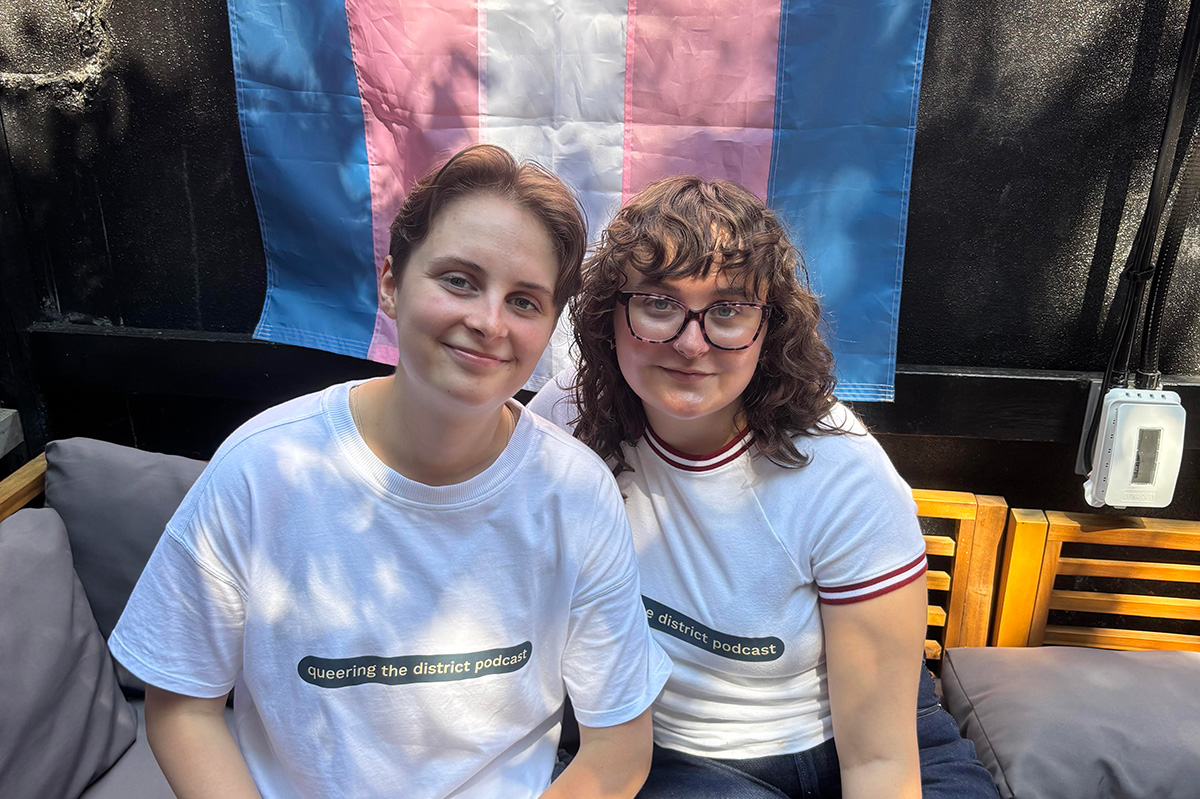
On June 25, as Pride month inched toward its end, three queer creators launched an ambitious project to honor the spaces that built D.C.’s LGBTQ community—and connect them to today’s queer life. The first episode of their podcast, Queering the District, hit streaming platforms that day, aiming to spotlight what host and co-creator Abby Stuckrath calls “third places”: bars, clubs, and gathering spots that have served as hubs for queer life across the city.
Each episode of the 10-part series delves into a different piece of D.C.’s queer past—from landmark clubs to untold personal stories—told through the voices of drag legends, activists, DJs, historians, and patrons who lived it. The show also threads together personal experiences from today’s community, bringing the listener on an auditory journey from Prohibition-era speakeasies to contemporary nights out at places like As You Are or Saints & Sinners.
Abby Stuckrath, alongside her sibling Ellie Stuckrath, and producer Mads Reagan, make up the podcast’s creative team. A recent journalism graduate of American University, Abby told the Blade that her passion for queer storytelling began during college—and that D.C. itself played a defining role in shaping her queer identity.
“I went to American University. I graduated last year and studied journalism. When I was in school, I always wanted to focus on queer stories – especially in D.C., because I’m from Denver, Colorado, I’ve never lived in a place like this before. D.C. has always just kind of been a place I call home when it comes to my queer identity.”
But breaking into the media to tell those stories wasn’t easy. Stuckrath quickly learned that editorial support—and funding—for queer-focused projects is limited. So she decided to do it her own way.
“I kind of found out that if you want to tell stories, you kind of have to do it on your own– especially when it comes to queer stories. There’s not a lot of people begging for us to talk about queer people and to pay you for it. So I was like, ‘Okay, let’s just do it on my own.’”
The idea for the podcast first took root in conversations with Ellie, Abby’s sibling and biggest supporter. Ellie had also moved to D.C. to find more space to explore and express their queer and gender identities. Together, the two began shaping a vision that would combine storytelling, sound design, and grassroots community input.
“I was like, ‘I don’t know what exactly I want to do yet, but I want it to be queer, and I want it to be about D.C., and it’s going to be called Queering the District, and we’re going to find out what that means.’ And Ellie is my biggest supporter, and my best friend. And they were like, ‘Hell yeah. Like, let’s do this.’ And so we decided to just do it together.”
The name stuck—and so did the mission. The team began researching queer D.C. history and found a city overflowing with stories that had rarely been documented, especially in mainstream archives.
“We started looking up the history of queer culture in D.C., and it kind of just clicked from there,” Stuckrath said. “I did not know anything about how rich our history is in the city until one Google search, and then I just kept learning more and more. I was kind of pissed because I studied gender studies in school in D.C. and didn’t learn shit about this.”
Season one focuses on the role of third places—non-work, non-home spaces where queer people could gather, exist fully, and build community.
“Third places have always been the epicenter of queer life… places outside of just your own personal home, because sometimes that isn’t a safe place. And of course, the work most commonly in the past and still today, isn’t a safe place for queer people to be full of themselves. So like, bars were the first place for queer people to really thrive and meet each other.”
To make the show participatory, Queering the District includes a twist: a voicemail line where anyone can call in and share a memory or question. The team calls the phone “Fifi”—a nod to the kind of retro guestbooks often used at weddings, but reimagined for queer nightlife and history.
“We wanted to find a way for people to share their stories with us anonymously… so even though we start in Prohibition, we wanted to connect it to now—like, those people who were singing jazz to each other in a white queer bar are connected to you singing karaoke on a Sunday night at your favorite gay bar. We’re all interconnected by this third place of queer bars in D.C.”
Those connections are emotional as well as historical. While building the series, one realization hit Stuckrath particularly hard: the immense loss of queer spaces in D.C., especially in neighborhoods that have since been heavily redeveloped.
“Every time I go to a Nats game, I think about, well, this just replaced five gay bars that used to be here. It used to be the home of Ziegfeld’s… Tracks, which was almost 2,000 square feet, with a volleyball court in the back, a fire pit, and iconic light show. I just didn’t know that we had that, and it made me sad for the queer elders that are in our city now who walk the streets and don’t see all those places they used to call home.”
That sense of loss—alongside the joy and resilience of queer community—is what the show aims to capture. As the podcast continues, Abby hopes it serves as both a celebration and an educational tool, especially for young LGBTQ people arriving in D.C. without realizing the queer foundations they’re walking on.
“D.C. is a unique city, and specifically young queer people who are hoping to move to the city—to know that you’ve got to know your history to be here. I hope this serves as an easier way for you to consume and learn about queer history, because queer history defines how we move in life.”
And for all the voices still left out, Abby is clear: this podcast is an open door, not a final word.
“This is a perfectly imperfect podcast. We should just be a starting point. We shouldn’t be the ending point.”
New episodes of Queering the District drop every Wednesday on all major platforms.
a&e features
Doug Spearman takes his chance
‘Noah’s Arc: The Movie’ debuted on Paramount+ last month
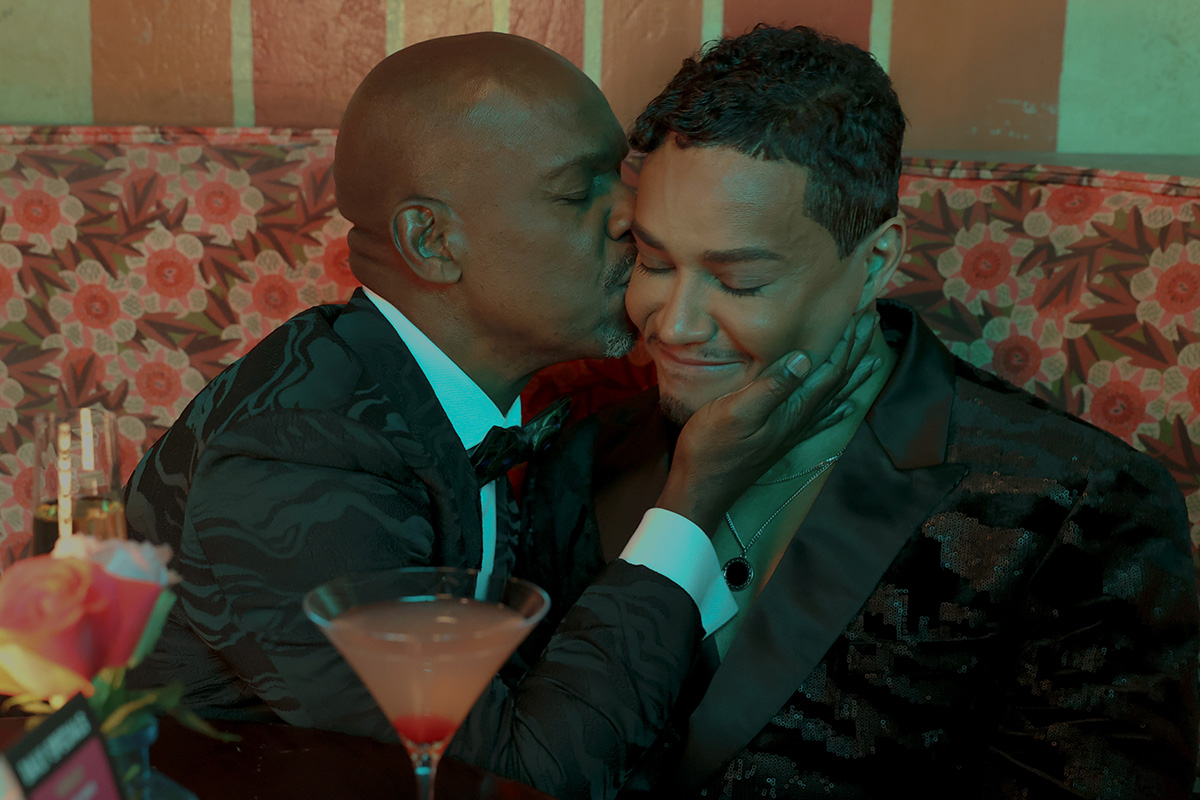
There’s no question that when Patrik-Ian Polk’s series “Noah’s Arc” premiered on Logo 20 years ago, it was a groundbreaking creation. The story of a group of Black gay men and their wonderful friendship. The titular arc was that of the cute main character, Noah (Darryl Stephens), and his close-knit circle of friends, including Chance played by gay actor Doug Spearman. This compelling and loving fraternity may, in fact, be what brought viewers back repeatedly, including a 2008 movie, “Noah’s Arc: Jumping the Broom,” as well as the 2020 “Noah’s Arc” short, and now, a new full-length feature “Noah’s Arc: The Movie,” debuting on Paramount+ on June 20. In the movie, filled with equal measures of laughs and tears, Chance, who has faced a devastating loss, finds his dependable friends there, ready to support and comfort him at a moment’s notice. I had the pleasure of speaking with Spearman the morning of the streaming premiere of “Noah’s Arc: The Movie.”
WASHINGTON BLADE: Doug, since the early 2000s, when the “Noah’s Arc” series premiered on Logo, you have been playing the character of Chance, including in the latest installment, “Noah’s Arc: The Movie.” What was it about Chance that appealed to you as an actor?
SPEARMAN: When Patrik (-Ian Polk) called me to ask me to play him (Chance), I was at JFK airport in the baggage claim, waiting for a suitcase. He explained what the part was. The thing that stuck out to me was the fact that Chance was in a long-term relationship with another Black man. And, they had a child; they had a 4-year-old daughter named Kenya. I had never seen two Black gay men raise a child on TV before. I thought it was the most revolutionary thing I’d ever seen. I immediately thought I’ve got to do this because that was something nobody had seen. I thought it was incredibly important to take the part.
BLADE: “Noah’s Arc: The Movie” was, once again, written and directed by Patrik-Ian Polk, who you just mentioned, is the creator of the entire franchise. What’s the secret to your long-standing working relationship?
SPEARMAN: [Laughs] the whole team, all of us, are like a band of brothers. We fight like brothers, we come together like brothers, we hash things out, we talk, because we’re all very different from our characters. I think the challenge of playing these guys and then uplifting these men, playing a part, especially something written by Patrik, is like solving a math equation. There’s always a challenge that’s enjoyable for me as an actor: to try to find out what it is that Patrik wants, and then how do I do it.
BLADE: I think you do a very good job of it.
SPEARMAN: Thank you very much
BLADE: In the years between “Jumping the Broom” and the new full-length movie, many changes have occurred, and the story addresses some of them, including gay widowhood, which is something that the aging community is now confronting, as well as mental health issues. Please say a few words about how you approached those subjects in the new movie.
SPEARMAN: I had a lot of loss in my life, right before we started shooting. Two months before we started shooting the first series, my mother died. I was going through the grief process through that whole first season. Since then, I’ve lost a lot of people in my life. In fact, when we started shooting the second season, the second week we were shooting, my ex died of a heart attack. I was having to fold that into what I was doing with my life on the set and off the set. You’ve got to show up and you’ve got to do your work. The first two seasons of “Noah’s Arc” are always tinged with the memory of grief. So, when I had to deal with the death that Chance faces (in the new movie), which is a significant death in his life, it wasn’t that hard to reach back, especially the scene in the graveyard. It was something that I unfortunately could pull from personal experience.
BLADE: Shifting gears, the movie features delightful cast surprises, including Jasmine Guy and TS Madison. Did you have a chance to interact with either or both when they were on set?
SPEARMAN: No, I didn’t have any scenes with Jasmine, and I missed her. I wish I had gotten to see her because I actually got to direct Jasmine for a CBS promo shoot for “Queen,” back in the early ‘90s. I had a huge crush on her when she was on “A Different World.” So, I really would have liked to reconnect. But TS and I got to see each other every day because I was in all her scenes. It was extraordinary being around somebody like that. That is one outspoken woman!
BLADE: Even though Beyoncé never makes an appearance in the movie, there’s a lot of talk about her. Would you say you are a Beyoncé fan?
SPEARMAN: Yes! I’m breathing! Yes, I’m a Beyoncé fan. I actually got the chance to meet her. I knew her mom. Her mom was extraordinary to me. She is in the second movie I directed. She also gave us a wedding gown to use in the very first scene of the movie. That family is extraordinarily important to me. Not only just to be a fan, but to be somebody who’s gotten to know them and work with them and see how hard they work. I don’t think anybody works as hard as Tina or Beyoncé.
BLADE: There was a recent news item about gay actor Benito Skinner of the Amazon Prime series “Overcompensating” being told not to bother auditioning for straight roles. As an out actor yourself, how important do you think it is for queer characters to be portrayed by queer actors, and vice versa?
SPEARMAN: Being queer is a multifaceted identity. There’s no one kind of queer person. I think finding the best actor that’s your first circle of casting. I think one of the joys about being an actor is that you get to play different parts. I play straight guys all the time. Dads and husbands and things like that. I think a lot of people are told not to do it. In fact, I wouldn’t be Chance if the actor who was originally cast as Chance hadn’t been pulled out of the series by his agents because they didn’t want him to play a gay character.
BLADE: That’s amazing! Thank you for sharing that. Without giving away too much, the ending of the movie is a little ambiguous, even ending with a question mark. If there was a “Noah’s Arc: The Movie” sequel, would you come back for that?
SPEARMAN: Yeah! A lot of it would depend on what Chance’s journey is going to be like. Patrik and I have conversations like that all the time. He’s very interested and supportive of input. I hope I would be, as we all would be, part of the creative growth with these characters. They live in Patrik’s head, and he writes them, but we’re the ones who have to flesh them out. It’s a conversation, it’s always a conversation.
BLADE: You are currently performing in Molière’s “The Imaginary Invalid” as part of the New Orleans Shakespeare Festival at Tulane. What has this experience been like for you?
SPEARMAN: It’s extraordinary! I started on stage when I was seven. There’s nothing like working with a live audience and having that immediacy. I’m working with an extraordinarily talented cast in a really great play, and I have some of the best scene partners I could ever want.
BLADE: Are there any upcoming film or TV projects you’d like to mention?
SPEARMAN: I’m still a writer, and I’m still a director, and I’ve still got scripts that I would like to make. I have a little something that’s a cross between “Treme” and “Bridgerton” that I want to do. I’m always trying to figure out what the next thing is.
a&e features
Visit Cambridge, a ‘beautiful secret’ on Maryland’s Eastern Shore
New organization promotes town’s welcoming vibe, LGBTQ inclusion
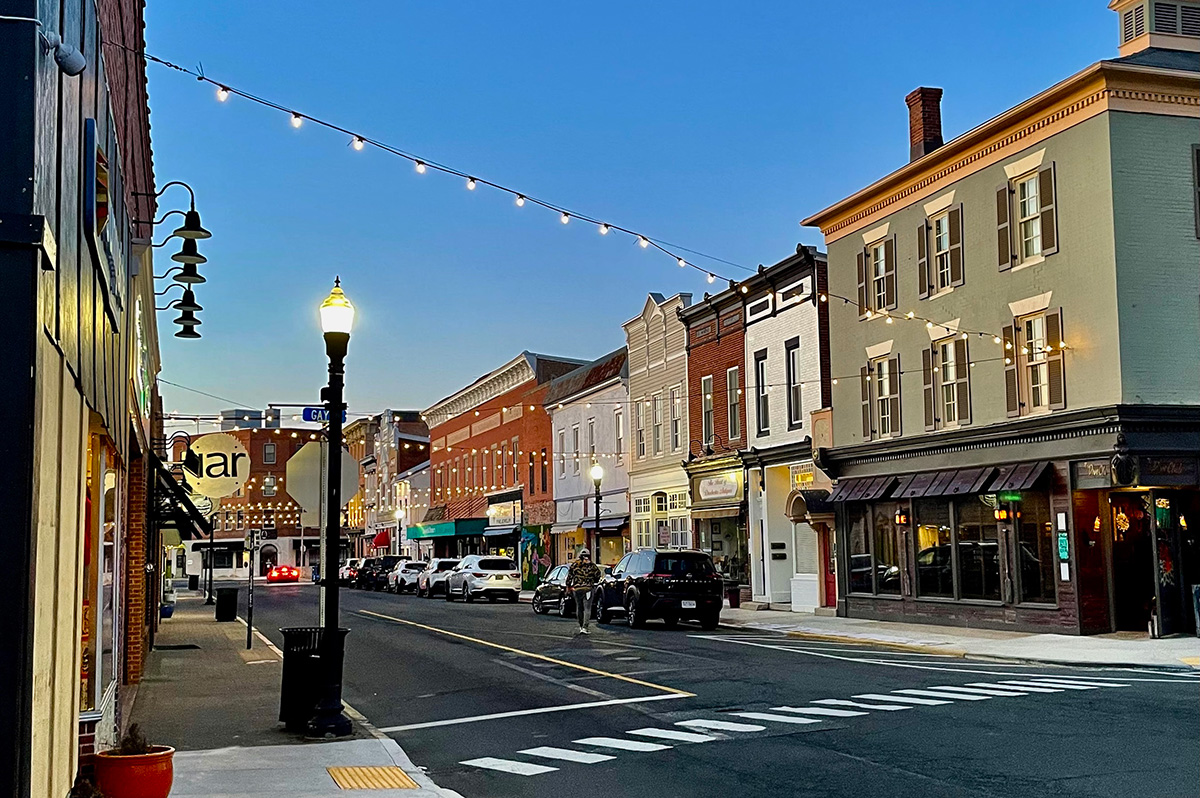
CAMBRIDGE, Md. — Driving through this scenic, historic town on Maryland’s Eastern Shore, you’ll be charmed by streets lined with unique shops, restaurants, and beautifully restored Victorian homes. You’ll also be struck by the number of LGBTQ Pride flags flying throughout the town.
The flags are a reassuring signal that everyone is welcome here, despite the town’s location in ruby red Dorchester County, which voted for Donald Trump over Kamala Harris by a lopsided margin. But don’t let that deter you from visiting. A new organization, Proudly Cambridge, is holding its debut Pride event this weekend, touting the town’s welcoming, inclusive culture.
“We stumbled on a beautiful secret and we wanted to help get the word out,” said James Lumalcuri of the effort to create Proudly Cambridge.
The organization celebrates diversity, enhances public spaces, and seeks to uplift all that Cambridge has to share, according to its mission statement, under the tagline “You Belong Here.”
The group has so far held informal movie nights and a picnic and garden party; the launch party is June 28 at the Cambridge Yacht Club, which will feature a Pride celebration and tea dance. The event’s 75 tickets sold out quickly and proceeds benefit DoCo Pride.
“Tickets went faster than we imagined and we’re bummed we can’t welcome everyone who wanted to come,” Lumalcuri said, adding that organizers plan to make “Cheers on the Choptank” an annual event with added capacity next year.
One of the group’s first projects was to distribute free Pride flags to anyone who requested one and the result is a visually striking display of a large number of flags flying all over town. Up next: Proudly Cambridge plans to roll out a program offering affirming businesses rainbow crab stickers to show their inclusiveness and LGBTQ support. The group also wants to engage with potential visitors and homebuyers.
“We want to spread the word outside of Cambridge — in D.C. and Baltimore — who don’t know about Cambridge,” Lumalcuri said. “We want them to come and know we are a safe haven. You can exist here and feel comfortable and supported by neighbors in a way that we didn’t anticipate when we moved here.”
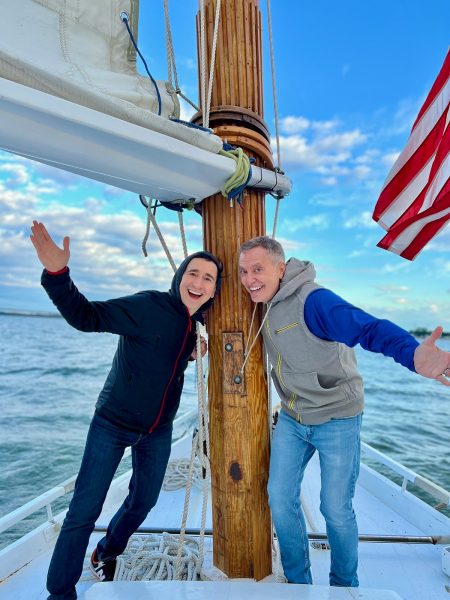
Lumalcuri, 53, a federal government employee, and his husband, Lou Cardenas, 62, a Realtor, purchased a Victorian house in Cambridge in 2021 and embarked on an extensive renovation. The couple also owns a home in Adams Morgan in D.C.
“We saw the opportunity here and wanted to share it with others,” Cardenas said. “There’s lots of housing inventory in the $300-400,000 range … we’re not here to gentrify people out of town because a lot of these homes are just empty and need to be fixed up and we’re happy to be a part of that.”
Lumalcuri was talking with friends one Sunday last year at the gazebo (affectionately known as the “gayzebo” by locals) at the Yacht Club and the idea for Proudly Cambridge was born. The founding board members are Lumalcuri, Corey van Vlymen, Brian Orjuela, Lauren Mross, and Caleb Holland. The group is currently working toward forming a 501(c)3.
“We need visibility and support for those who need it,” Mross said. “We started making lists of what we wanted to do and the five of us ran with it. We started meeting weekly and solidified what we wanted to do.”
Mross, 50, a brand strategist and web designer, moved to Cambridge from Atlanta with her wife three years ago. They knew they wanted to be near the water and farther north and began researching their options when they discovered Cambridge.
“I had not heard of Cambridge but the location seemed perfect,” she said. “I pointed on a map and said this is where we’re going to move.”
The couple packed up, bought a camper trailer and parked it in different campsites but kept coming back to Cambridge.
“I didn’t know how right it was until we moved here,” she said. “It’s the most welcoming place … there’s an energy vortex here – how did so many cool, progressive people end up in one place?”
Corey van Vlymen and his husband live in D.C. and were looking for a second home. They considered Lost River, W.Va., but decided they preferred to be on the water.
“We looked at a map on both sides of the bay and came to Cambridge on a Saturday and bought a house that day,” said van Vlymen, 39, a senior scientist at Booz Allen Hamilton. They’ve owned in Cambridge for two years.
They were drawn to Cambridge due to its location on the water, the affordable housing inventory, and its proximity to D.C.; it’s about an hour and 20 minutes away.
Now, through the work of Proudly Cambridge, they hope to highlight the town’s many attributes to residents and visitors alike.
“Something we all agree on is there’s a perception problem for Cambridge and a lack of awareness,” van Vlymen said. “If you tell someone you’re going to Cambridge, chances are they think, ‘England or Massachusetts?’”
He cited the affordability and the opportunity to save older, historic homes as a big draw for buyers.
“It’s all about celebrating all the things that make Cambridge great,” Mross added. “Our monthly social events are joyful and celebratory.” A recent game night drew about 70 people.
She noted that the goal is not to gentrify the town and push longtime residents out, but to uplift all the people who are already there while welcoming new visitors and future residents.
They also noted that Proudly Cambridge does not seek to supplant existing Pride-focused organizations. Dorchester County Pride organizes countywide Pride events and Delmarva Pride was held in nearby Easton two weeks ago.
“We celebrate all diversity but are gay powered and gay led,” Mross noted.
To learn more about Proudly Cambridge, visit the group on Facebook and Instagram.
What to see and do
Cambridge, located 13 miles up the Choptank River from the Chesapeake Bay, has a population of roughly 15,000. It was settled in 1684 and named for the English university town in 1686. It is home to the Harriet Tubman Museum, mural, and monument. Its proximity to the Blackwater National Wildlife Refuge makes it a popular stop for birders, drawn to more than 27,000 acres of marshland dubbed “the Everglades of the north.”
The refuge is walkable, bikeable, and driveable, making it an accessible attraction for all. There are kayaking and biking tours through Blackwater Adventures (blackwateradventuresmd.com).
Back in town, take a stroll along the water and through historic downtown and admire the architecture. Take in the striking Harriet Tubman mural (424 Race St.). Shop in the many local boutiques, and don’t miss the gay-owned Shorelife Home and Gifts (421 Race St.), filled with stylish coastal décor items.
Stop for breakfast or lunch at Black Water Bakery (429 Race St.), which offers a full compliment of coffee drinks along with a build-your-own mimosa bar and a full menu of creative cocktails.
The Cambridge Yacht Club (1 Mill St.) is always bustling but you need to be a member to get in. Snapper’s on the water is temporarily closed for renovations. RaR Brewing (rarbrewing.com) is popular for craft beers served in an 80-year-old former pool hall and bowling alley. The menu offers burgers, wings, and other bar fare.
For dinner or wine, don’t miss the fantastic Vintage 414 (414 Race St.), which offers lunch, dinner, wine tasting events, specialty foods, and a large selection of wines. The homemade cheddar crackers, inventive flatbreads, and creative desserts (citrus olive oil cake, carrot cake trifle) were a hit on a recent visit.
Also nearby is Ava’s (305 High St.), a regional chain offering outstanding Italian dishes, pizzas, and more.
For something off the beaten path, visit Emily’s Produce (22143 Church Creek Rd.) for its nursery, produce, and prepared meals.
“Ten minutes into the sticks there’s a place called Emily’s Produce, where you can pay $5 and walk through a field and pick sunflowers, blueberries, you can feed the goats … and they have great food,” van Vlymen said.
As for accommodations, there’s the Hyatt Regency Chesapeake Bay (100 Heron Blvd. at Route 50), a resort complex with golf course, spa, and marina. Otherwise, check out Airbnb and VRBO for short-term rentals closer to downtown.
Its proximity to D.C. and Baltimore makes Cambridge an ideal weekend getaway. The large LGBTQ population is welcoming and they are happy to talk up their town and show you around.
“There’s a closeness among the neighbors that I wasn’t feeling in D.C.,” Lumalcuri said. “We look after each other.”

